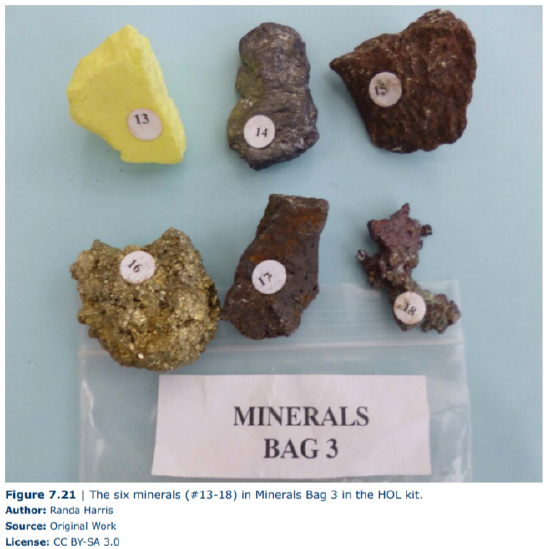7.11: Lab Exercise (Part C)
- Page ID
- 5587
\( \newcommand{\vecs}[1]{\overset { \scriptstyle \rightharpoonup} {\mathbf{#1}} } \)
\( \newcommand{\vecd}[1]{\overset{-\!-\!\rightharpoonup}{\vphantom{a}\smash {#1}}} \)
\( \newcommand{\id}{\mathrm{id}}\) \( \newcommand{\Span}{\mathrm{span}}\)
( \newcommand{\kernel}{\mathrm{null}\,}\) \( \newcommand{\range}{\mathrm{range}\,}\)
\( \newcommand{\RealPart}{\mathrm{Re}}\) \( \newcommand{\ImaginaryPart}{\mathrm{Im}}\)
\( \newcommand{\Argument}{\mathrm{Arg}}\) \( \newcommand{\norm}[1]{\| #1 \|}\)
\( \newcommand{\inner}[2]{\langle #1, #2 \rangle}\)
\( \newcommand{\Span}{\mathrm{span}}\)
\( \newcommand{\id}{\mathrm{id}}\)
\( \newcommand{\Span}{\mathrm{span}}\)
\( \newcommand{\kernel}{\mathrm{null}\,}\)
\( \newcommand{\range}{\mathrm{range}\,}\)
\( \newcommand{\RealPart}{\mathrm{Re}}\)
\( \newcommand{\ImaginaryPart}{\mathrm{Im}}\)
\( \newcommand{\Argument}{\mathrm{Arg}}\)
\( \newcommand{\norm}[1]{\| #1 \|}\)
\( \newcommand{\inner}[2]{\langle #1, #2 \rangle}\)
\( \newcommand{\Span}{\mathrm{span}}\) \( \newcommand{\AA}{\unicode[.8,0]{x212B}}\)
\( \newcommand{\vectorA}[1]{\vec{#1}} % arrow\)
\( \newcommand{\vectorAt}[1]{\vec{\text{#1}}} % arrow\)
\( \newcommand{\vectorB}[1]{\overset { \scriptstyle \rightharpoonup} {\mathbf{#1}} } \)
\( \newcommand{\vectorC}[1]{\textbf{#1}} \)
\( \newcommand{\vectorD}[1]{\overrightarrow{#1}} \)
\( \newcommand{\vectorDt}[1]{\overrightarrow{\text{#1}}} \)
\( \newcommand{\vectE}[1]{\overset{-\!-\!\rightharpoonup}{\vphantom{a}\smash{\mathbf {#1}}}} \)
\( \newcommand{\vecs}[1]{\overset { \scriptstyle \rightharpoonup} {\mathbf{#1}} } \)
\( \newcommand{\vecd}[1]{\overset{-\!-\!\rightharpoonup}{\vphantom{a}\smash {#1}}} \)
\(\newcommand{\avec}{\mathbf a}\) \(\newcommand{\bvec}{\mathbf b}\) \(\newcommand{\cvec}{\mathbf c}\) \(\newcommand{\dvec}{\mathbf d}\) \(\newcommand{\dtil}{\widetilde{\mathbf d}}\) \(\newcommand{\evec}{\mathbf e}\) \(\newcommand{\fvec}{\mathbf f}\) \(\newcommand{\nvec}{\mathbf n}\) \(\newcommand{\pvec}{\mathbf p}\) \(\newcommand{\qvec}{\mathbf q}\) \(\newcommand{\svec}{\mathbf s}\) \(\newcommand{\tvec}{\mathbf t}\) \(\newcommand{\uvec}{\mathbf u}\) \(\newcommand{\vvec}{\mathbf v}\) \(\newcommand{\wvec}{\mathbf w}\) \(\newcommand{\xvec}{\mathbf x}\) \(\newcommand{\yvec}{\mathbf y}\) \(\newcommand{\zvec}{\mathbf z}\) \(\newcommand{\rvec}{\mathbf r}\) \(\newcommand{\mvec}{\mathbf m}\) \(\newcommand{\zerovec}{\mathbf 0}\) \(\newcommand{\onevec}{\mathbf 1}\) \(\newcommand{\real}{\mathbb R}\) \(\newcommand{\twovec}[2]{\left[\begin{array}{r}#1 \\ #2 \end{array}\right]}\) \(\newcommand{\ctwovec}[2]{\left[\begin{array}{c}#1 \\ #2 \end{array}\right]}\) \(\newcommand{\threevec}[3]{\left[\begin{array}{r}#1 \\ #2 \\ #3 \end{array}\right]}\) \(\newcommand{\cthreevec}[3]{\left[\begin{array}{c}#1 \\ #2 \\ #3 \end{array}\right]}\) \(\newcommand{\fourvec}[4]{\left[\begin{array}{r}#1 \\ #2 \\ #3 \\ #4 \end{array}\right]}\) \(\newcommand{\cfourvec}[4]{\left[\begin{array}{c}#1 \\ #2 \\ #3 \\ #4 \end{array}\right]}\) \(\newcommand{\fivevec}[5]{\left[\begin{array}{r}#1 \\ #2 \\ #3 \\ #4 \\ #5 \\ \end{array}\right]}\) \(\newcommand{\cfivevec}[5]{\left[\begin{array}{c}#1 \\ #2 \\ #3 \\ #4 \\ #5 \\ \end{array}\right]}\) \(\newcommand{\mattwo}[4]{\left[\begin{array}{rr}#1 \amp #2 \\ #3 \amp #4 \\ \end{array}\right]}\) \(\newcommand{\laspan}[1]{\text{Span}\{#1\}}\) \(\newcommand{\bcal}{\cal B}\) \(\newcommand{\ccal}{\cal C}\) \(\newcommand{\scal}{\cal S}\) \(\newcommand{\wcal}{\cal W}\) \(\newcommand{\ecal}{\cal E}\) \(\newcommand{\coords}[2]{\left\{#1\right\}_{#2}}\) \(\newcommand{\gray}[1]{\color{gray}{#1}}\) \(\newcommand{\lgray}[1]{\color{lightgray}{#1}}\) \(\newcommand{\rank}{\operatorname{rank}}\) \(\newcommand{\row}{\text{Row}}\) \(\newcommand{\col}{\text{Col}}\) \(\renewcommand{\row}{\text{Row}}\) \(\newcommand{\nul}{\text{Nul}}\) \(\newcommand{\var}{\text{Var}}\) \(\newcommand{\corr}{\text{corr}}\) \(\newcommand{\len}[1]{\left|#1\right|}\) \(\newcommand{\bbar}{\overline{\bvec}}\) \(\newcommand{\bhat}{\widehat{\bvec}}\) \(\newcommand{\bperp}{\bvec^\perp}\) \(\newcommand{\xhat}{\widehat{\xvec}}\) \(\newcommand{\vhat}{\widehat{\vvec}}\) \(\newcommand{\uhat}{\widehat{\uvec}}\) \(\newcommand{\what}{\widehat{\wvec}}\) \(\newcommand{\Sighat}{\widehat{\Sigma}}\) \(\newcommand{\lt}{<}\) \(\newcommand{\gt}{>}\) \(\newcommand{\amp}{&}\) \(\definecolor{fillinmathshade}{gray}{0.9}\)Overview
Take out Minerals Bag 3 and lay the six mineral samples out on a white sheet of paper. It should appear like Figure 7.21. We will first examine several properties, including streak, from these six samples, and will answer more questions about them later in the lab. Look closely at each of the minerals, using the hand lens to observe them. In this bag, you have the following minerals (not listed in order): Magnetite, Graphite, Copper, Sulfur, Hematite, and Pyrite. They are numbered 13-18.

15. Sample 13: What is the streak of this sample?
a. dark gray streak
b. white streak
c. reddish brown streak
d. pale yellow streak
16. Sample 13: What is the luster of this sample?
a. non-metallic, vitreous
b. non-metallic, earthy
c. non-metallic, greasy
d. non-metallic, waxy e. metallic
17. Sample 14: What is the streak of this sample?
a. dark gray to black streak
b. white streak
c. reddish-brown streak
d. pale yellow streak
18. Sample 14: Which other item(s) is/are characteristic(s) of this sample?
a. stains the fingers
b. harder than glass
c. greasy feel
d. both a and b
e. both a and c
19. Sample 15: What is the streak of this sample?
a. dark gray to black streak
b. white streak
c. reddish-brown streak
d. pale yellow streak
20. Sample 16: What is the luster of this sample?
a. non-metallic, vitreous
b. non-metallic, earthy
c. non-metallic, greasy
d. non-metallic, waxy
e. metallic
21. Sample 16: Due to its appearance, this sample has often been confused with native gold, a mineral with a hardness of 2.5-3. How does its hardness compare with that of gold?
a. Sample 16 is harder than gold.
b. Sample 16 is softer than gold.
22. Sample 17: What is the streak of this sample?
a. dark gray to black streak
b. white streak
c. reddish-brown streak
d. pale yellow streak
23. Sample 17: What another unique property does this sample have?
a. effervescence in acid
b. it is magnetic
c. it tastes salty
d. it feels soapy
e. it writes on paper
24. Sample 18. Examine this entire sample closely with a hand lens. What is the luster of this sample?
a. non-metallic, vitreous
b. non-metallic, earthy
c. non-metallic, greasy
d. non-metallic, waxy
e. metallic
Now that you have had practice at detecting the properties of your 18 mineral samples, take the next step of identifying each sample and answering the questions below. Use the Mineral Identification Chart (Figure 7.22) to help you.
25. Sample 1: What is this sample?
a. Microcline
b. Fluorite
c. Quartz
d. Olivine
e. Talc
f. Selenite (Gypsum)
26. Sample 2: What is this sample?
a. Microcline
b. Fluorite
c. Quartz
d. Olivine
e. Talc
f. Selenite (Gypsum)
Mineral Identification Chart
| Luster | Hardness | Cleavage | Other Properties | Mineral Name |
| Non-Metallic | > Glass | Poor Cleavage | Red-brown, black, silver in color. H=6. St=red-brown | Hematite |
| Olive-green in color. H=6. St=white. Commonly granular | Olivine | |||
| Variety of colors. H=7. Conchoidal fracture. Vitreous luster. | Quartz | |||
| Clearly Shows Cleavage | Black to greenish-black in color. H=6. C=2 planes at ~60° and 120°. Elongated crystals. | Amphibole | ||
| Tan-pink, white, green in color. H=6. C=2 planes at 90°. | Microcline | |||
| Black to greenish-black in color. H=6. C=2 planes at ~90°. Short stubby crystals. | Pyroxene | |||
| < Glass | Poor Cleavage | Dark gray to black in color. H=1. Greasy feel - will smudge fingers. | Graphite | |
| Yellow in color. H=1.5-2.5. St=white to yellow. | Sulfur | |||
| White to green in color. H=1. Soapy feel. | Talc | |||
| Clearly Shows Cleavage | Brown to black in color. H=2.5. C=1 perfect. Breaks into thin sheets that are elastic. | Biotite Mica | ||
| White to transparent in color. H=3. C=3 rhombohedral. Strong effervescence in acid. | Calcite | |||
| Transparent, yellow, purple, green in color. H=4. C=4 - octahedral. | Fluorite | |||
| Transparent to white in color. H=2. C=3, though 2 directions may be difficult to see. | Gypsum | |||
| White to transparent in color. H=2.5. C=3, cubic. Tastes salty. | Halite | |||
| Transparent, light brown, to yellow in color. H=2.5. C=1 perfect. Breaks into thin sheets that are elastic. | Muscovite Mica | |||
| Metallic | > Glass | Poor Cleavage | Black in color. H=6. St=black. Strongly magnetic. | Magnetite |
| Brass-yellow in color. H=6.5. St=dark gray. | Pyrite | |||
| < Glass | Poor Cleavage | Copper-red in color. Tarnishes to green or black in air. H=2.5-3. St=copper-red. | Copper |
27. Sample 3: What is this sample?
a. Microcline
b. Fluorite
c. Quartz
d. Olivine
e. Talc
f. Selenite (Gypsum)
28. Sample 4: What is this sample?
a. Microcline
b. Fluorite
c. Quartz
d. Olivine
e. Talc
f. Selenite (Gypsum)
29. Sample 4: What other unique property does this sample have?
a. effervescence in acid
b. it is magnetic.
c. it tastes salty.
d. it feels soapy.
e. it writes on paper.
30. Sample 5: What is this sample?
a. Microcline
b. Fluorite
c. Quartz
d. Olivine
e. Talc
f. Selenite (Gypsum)
31. Sample 6: What is this sample?
a. Microcline
b. Fluorite
c. Quartz
d. Olivine
e. Talc
f. Selenite (Gypsum)
32. Sample 7: What is this sample?
a. Pyroxene
b. Muscovite Mica
c. Halite
d. Amphibole
e. Calcite
f. Biotite Mica
33. Sample 7: What other unique property does this sample have?
a. effervescence in acid
b. it is magnetic.
c. it tastes salty.
d. it feels soapy.
e. it writes on paper.
34. Sample 8: What is this sample?
a. Pyroxene
b. Muscovite Mica
c. Halite
d. Amphibole
e. Calcite
f. Biotite Mica
35. Sample 8: What other unique property does this sample have?
a. effervescence in acid
b. it is magnetic.
c. it tastes salty.
d. it feels soapy.
e. it writes on paper.
36. Sample 9: What is this sample?
a. Pyroxene
b. Muscovite Mica
c. Halite
d. Amphibole
e. Calcite
f. Biotite Mica
37. Sample 10: What is this sample?
a. Pyroxene
b. Muscovite Mica
c. Halite
d. Amphibole
e. Calcite
f. Biotite Mica
38. Sample 10: Test this tenacity of this mineral by trying to bend it. Which way does it behave?
a. sectile
b. malleable
c. elastic
d. brittle
39. Sample 11: What is this sample?
a. Pyroxene
b. Muscovite Mica
c. Halite
d. Amphibole
e. Calcite
f. Biotite Mica
40. Sample 12: What is this sample?
a. Pyroxene
b. Muscovite Mica
c. Halite
d. Amphibole
e. Calcite
f. Biotite Mica
41. Sample 13: What is this sample?
a. Magnetite
b. Graphite
c. Copper
d. Sulfur
e. Hematite
f. Pyrite
42. Sample 14: What is this sample?
a. Magnetite
b. Graphite
c. Copper
d. Sulfur
e. Hematite
f. Pyrite
43. Sample 15: What is this sample?
a. Magnetite
b. Graphite
c. Copper
d. Sulfur
e. Hematite
f. Pyrite
44. Sample 16: What is this sample?
a. Magnetite
b. Graphite
c. Copper
d. Sulfur
e. Hematite
f. Pyrite
45. Sample 17: What is this sample?
a. Magnetite
b. Graphite
c. Copper
d. Sulfur
e. Hematite
f. Pyrite
46. Sample 18: What is this sample?
a. Magnetite
b. Graphite
c. Copper
d. Sulfur
e. Hematite
f. Pyrite
Mineral Notation Chart
Fill in this chart as you work through the lab. An example of a mineral you do not have in your kit (#0) is included. You do not have to fill out every column for every mineral – just follow along in the lab and determine the properties you are asked about.
| Mineral # | Luster | Hardness | Cleavage/Fracture | Streak | Other Notable Properties (include color when diagnostic) | Name |
| 0 | Metallic | ~2.5 – May scratch fingernail | 3 - cubic | Gray | High specific gravity because it is heavy | Galena |


